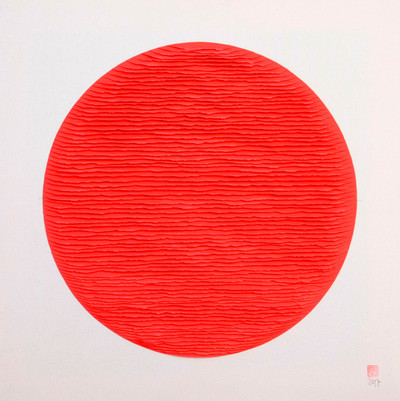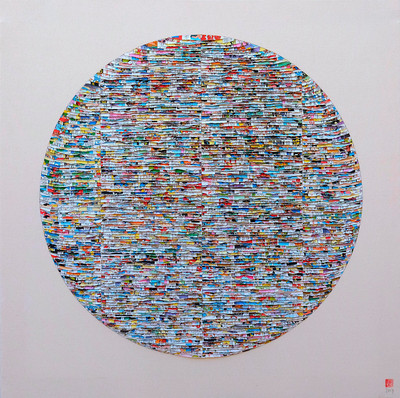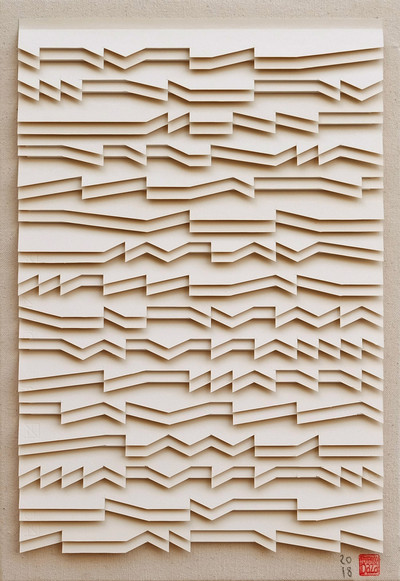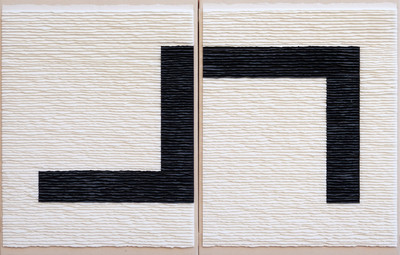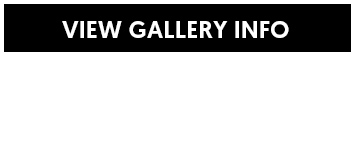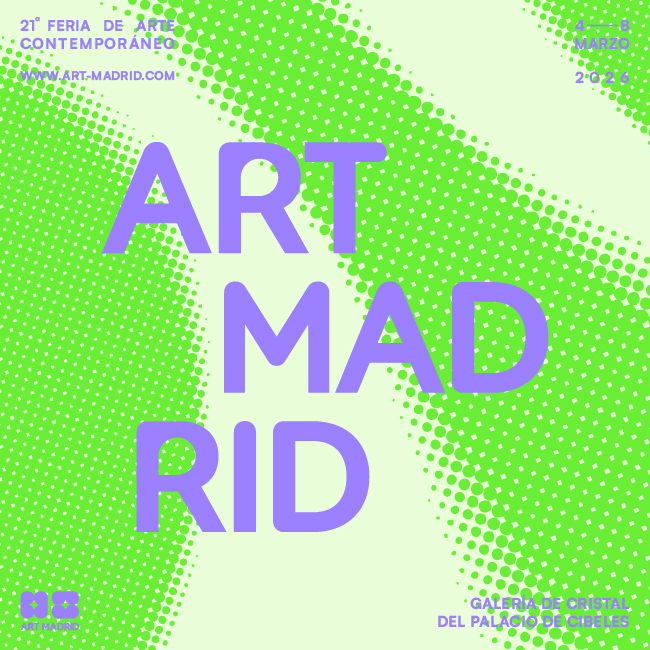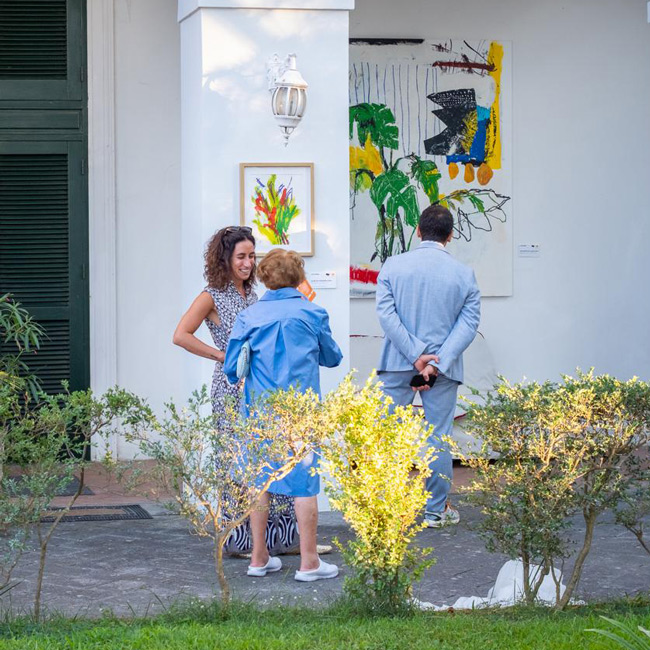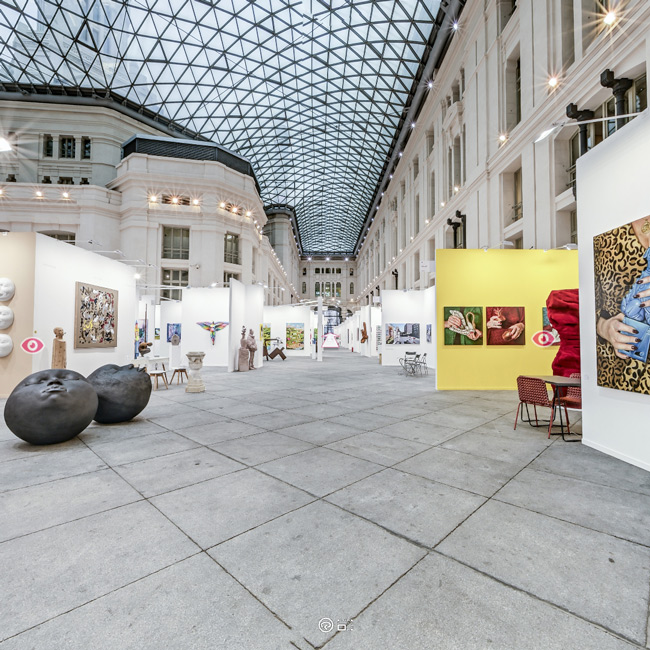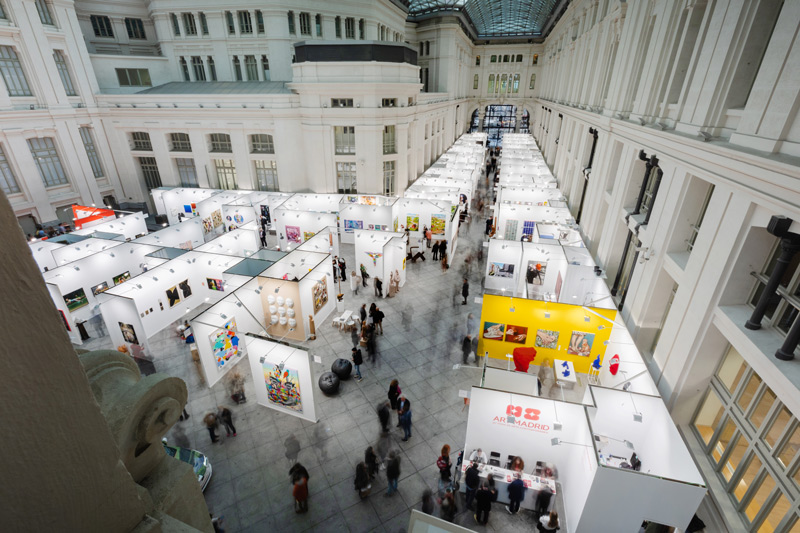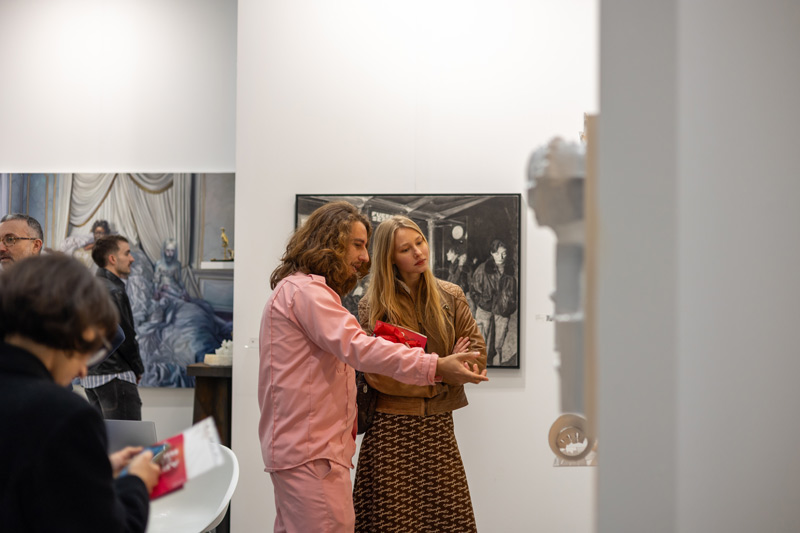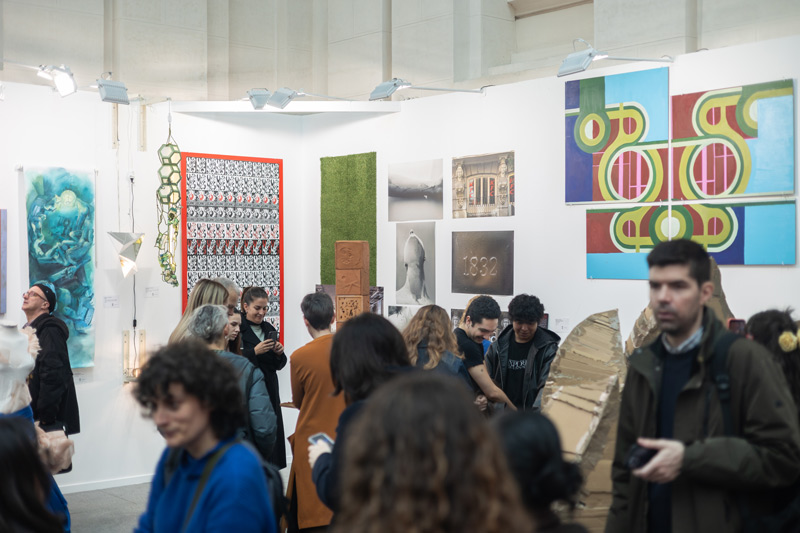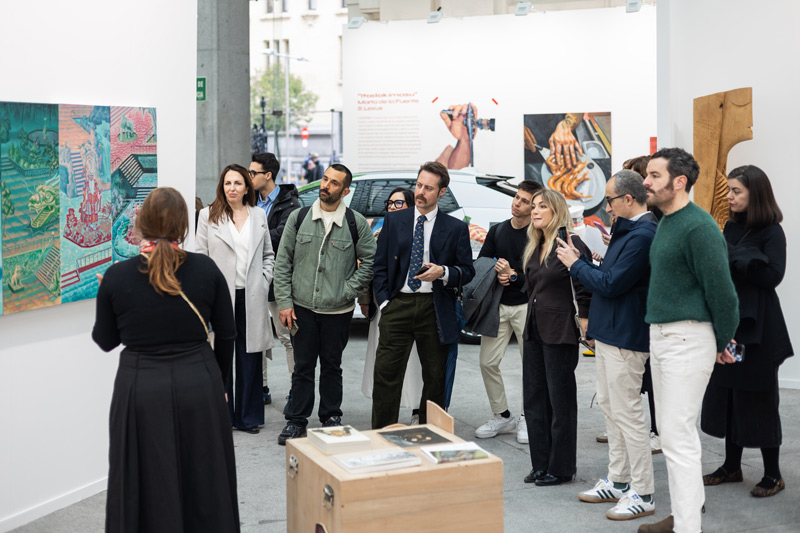FERNANDO DAZA INTERVIEW, "BETWEEN THE MYSTICAL AND THE CONCRETE". NEXT TO THE GALLERY SORAYA CARTATEGUI
Feb 23, 2020
art madrid
”My work deals with a double conceptual origin, the mystical and the concrete, and this dichotomy evolves between the spiritual search for a transcendental experience and the desire to emphasize the material presence as a concrete reality and not as an illusion”.
Fernando Daza (Seville, 1979), presents his latest creations in Art madrid, two diptychs and two individual works in square format, as well as some works made with medium format comic strips.
The Sevillian artist has participated in numerous individual and collective exhibitions in Madrid, Girona, Cadiz, Lisbon, Sardinia and Belgrade, and his work is present in public and private collections around the world, including the National Museum of Contemporary Art in Skopje and the National Art Gallery of Kosovo.
Soraya Cartategui Gallery presents your work in Art for the second year in a row, what do you expect from this edition of the Fair, how do you think your work fits in Art Madrid?
In this occasion, the fair also celebrates the fifteenth anniversary of its foundation, I hope that all the expectations of diffusion and sale of the best contemporary art will be fulfilled. This fair has always been an excellent showcase for the work of the most outstanding artists on the current national and international art scene. Of course, the scenario offered by the city of Madrid and the fabulous glass hall of the CentroCentro Cibeles building is unbeatable for hosting one of the most relevant artistic events of the year in Spain.
From the beginning, I believe that this fair has managed to preserve its open, dynamic and avant-garde character. I also believe that it is a very lively fair, with a large attendance of public and especially of collectors, with very colorful and large format works. I think that because of these characteristics my work adapts quite well to the philosophy of the fair. In fact, in the last edition, my work debuted in this fair with Soraya's gallery and was very well received. I was very satisfied with my participation and I am sure I will be for this edition.
What artworks by Fernando Daza we will see in this edition of Art Madrid?
As a novelty, in this edition, I will present two diptychs and two individual works of square format. One of the diptychs is very powerful because of the oranges in the paper I have used, it is about two opposite curved forms on raw linen cloth. The other is a double composition of inverse black and white forms on a background, also inverse, in black and white. And the ones with a square support are two geometric compositions, one in the form of a cross and the other square on a background of indigo blue paper. You can also see in the stand some works made with torn comic paper in medium format, also square.
The delicacy with which you work the paper and the careful editing you prepare for your works is admirable, can you tell us in general terms what your method of working is, what the creative process is like before arriving at the final piece?
In my work, I use paper torn by hand into strips, which I later accumulate in an orderly manner and paste on the canvas, following a compositional scheme that I previously draw in pencil on the support. It is a work made in canvas on a frame, a two-dimensional support traditionally used for painting, although its character is clearly three-dimensional due to the disposition of the strips of paper; these are folded in half lengthwise and glued on the canvas on one of its sides, leaving the other side raised, slightly separated from the surface of the canvas. This method of adhering the paper to the canvas provides a raised and uneven plane. By means of a zenithal light projection, natural or artificial, we obtain a soft contrast between lights and shadows, which results in a rich and vibrant surface of visual textures. This is the most relevant formal feature of my plastic work and the distinctive feature that best characterizes it.
The origin of this creative technique came after a long period of research after I finished my degree in Fine Arts at the University of Seville. My last year of my degree I studied with an Erasmus grant at the Faculty of Fine Arts in Athens. There I started making some works with collages. The scholarship allowed us to spend the night in schools attached to the Faculty in many of the Aegean islands. We spent some time creating in these annexed schools, and since it was impossible to transport materials such as canvases, frames and paintings, I only carried a folder with papers, watercolors, inks and glue. It was here, in Greece, that my interest in collage and creation with paper began. When I returned to Spain, I wanted to continue my research in this field because I thought it was a technique that could be new compared to traditional painting techniques.
I became aware at that time of the possibilities that used paper could offer me as the main material for the creation of artworks in substitution of painting.
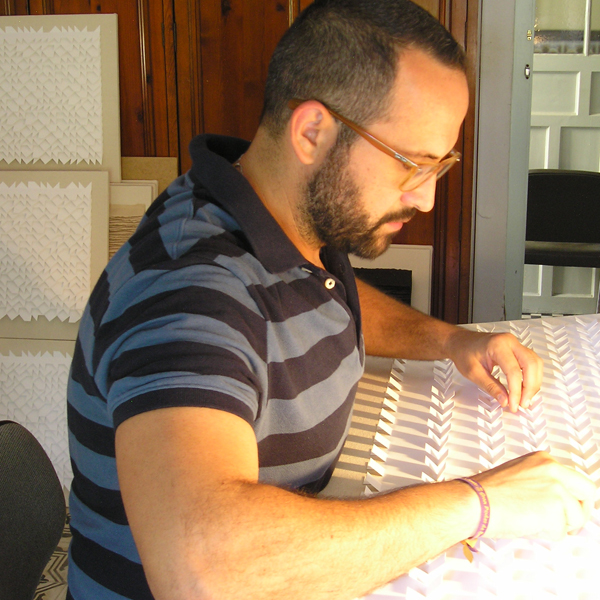
At that time, after finishing my studies in Fine Arts, my two older brothers, lawyers, inherited an agency that was owned by my father. One day I went to help them throw away a pile of boxes full of papers and old documents and I realized at that moment that I could use those papers for my creations. I took the boxes home and began a period of research over several years from which I obtained very fruitful results. I found several ways to accumulate the paper and create three-dimensional compositions. As time went by, I bought coloured drawing and engraving papers.
In general, your works are monochrome or bichrome, does this simplification of color have any special meaning?
My work has a double conceptual origin, the mystical and the concrete, and this dichotomy evolves between the spiritual search for a transcendental experience and the desire to emphasize the material presence as a concrete reality and not as an illusion. My compositions basically suggest approaches of suprematist origin; the search for pure sensibility through the predominance of nothingness and the representation of a universe without objects; orthogonal abstract structures, fundamental geometrical forms such as the square and the circle or simply monochrome backgrounds lacking figures. In this way, I intend to show states of maximum order with the minimum means and minimum complexity of elements and to pay more attention to the whole work than to the relationships between the singular parts.
Due to its apparent simplicity, I believe that my work hides an enigmatic presence that seems to resist interpretation and transmits spatiality and idealism to the viewer. The finishes and the material play a fundamental role in the search for balance and beauty, always in accordance with the moderation and placidity transmitted by the canvas of the support; of cotton or linen, raw and without primer. In the works where I use two colours, the chromatic contrast provides a mixed language result where the calm and subtlety of the light colours are broken by the vigour, power and firmness of the black, yellow, red and dark grey. This idea of contrariness and complementarity between opposites or inverses in the diptych works is very interesting to me because I think it harmonizes the composition.
As an artist, what do you feel committed to?
Mainly I feel committed to the idea of making an artistic work not only coherent with my needs and creative interests, but also with the moment I have to live. In my particular case, and I think I could say that the same thing happens to all my professional colleagues, there is an impulse and a permanent need to create, which are also basic and primary, that goes back, according to my conscience, to my earliest childhood, to the very origin of the use of reason. Parallel to this need, the resistance to devote myself to other professional tasks that had nothing to do with artistic practice was born and strengthened. For this reason I have focused on following this path, despite the many difficulties encountered against me. But it's such a gratification to be able to dedicate yourself to what you believe in and love that it's worth it just for that. In this sense, I could say that the first commitment is to myself.
The gallery Soraya Cartategui, based in Madrid and New York, participates once again, within the general program of Art Madrid, with a selection of works from the most recent work of the artists from Seville: Isabelita Valdecasas and Fernando Daza and the Thai artist Chamnan Chongpaiboon


